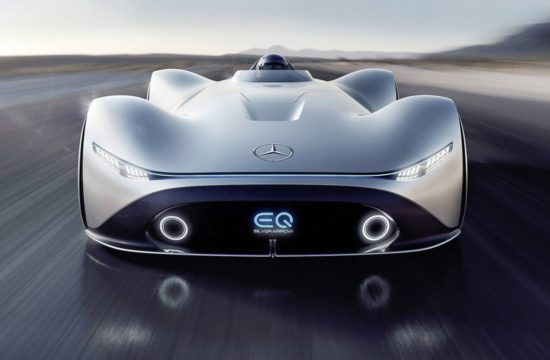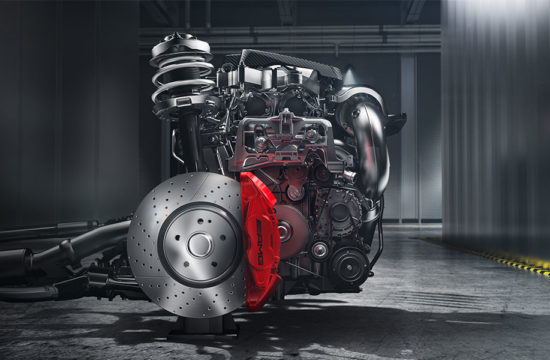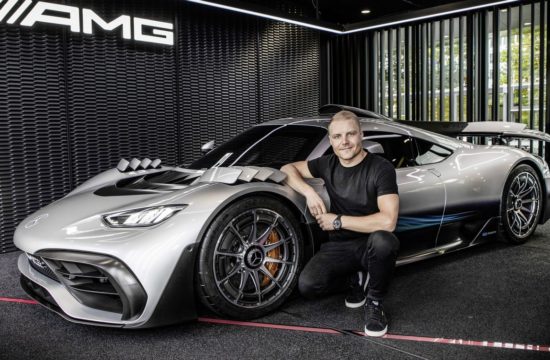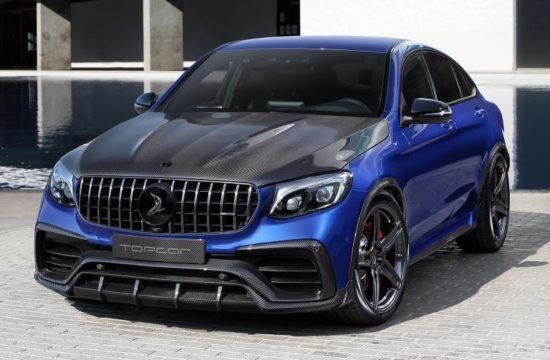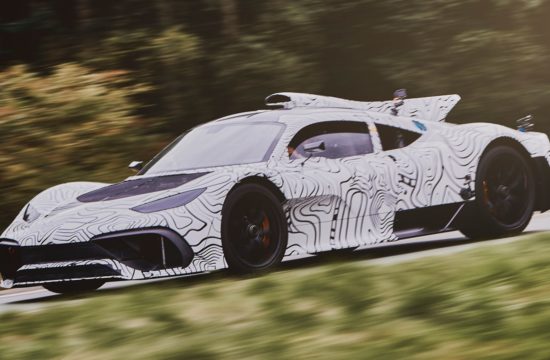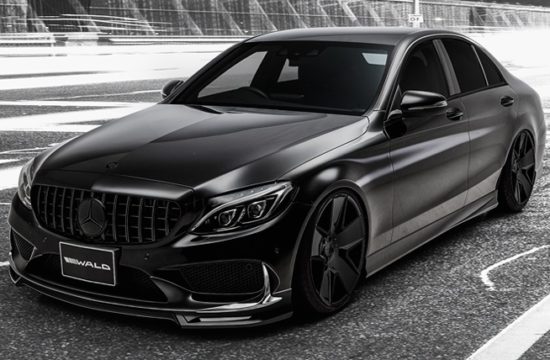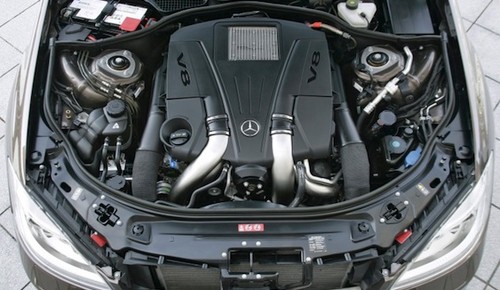
Mercedes released details of their new V8 and V6 engines, which as usual produce more power and use less fuel. But the amount of power these new powerplants develop in comparison to the ones they replace, is just incredible. You will find all the boring technical details about them right after he jump but in brief,the new 4.6 liter bi-turbo V8 has 435 hp instead of 388 hp of the current one, and the new 3.5 liter V6 puts out 306 hp instead of 272 hp.
As for the torque or pulling power as some people call it, the new V8 with an increase of 32 percent produces an astonishing 700 Nm (530 Nm for the old one), while the fuel consumption and CO2 emissions have fallen by 22 percent to 9.5 liters per 100 Km (from 12.3 liters) and 224 g/km.
Key figures for the new V8 engine
|
No. of cylinders |
V8 |
|
Displacement (cc) |
4633 |
|
Bore (mm) |
92.9 |
|
Stroke (mm) |
86 |
|
Compression ratio |
10.5:1 |
|
Output (kW at rpm) |
320 at 5250 |
|
Torque (Nm at rpm) |
700 from 1800-3500 |
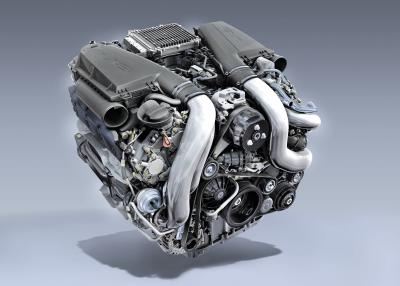
The V6 too comes with more torque, 370 Nm (350 Nm for the last one), and it’s very economical as well as in a big S-class it can manage 7.6 litres per 100 kilometres and CO2 emissions of 177 g/km. That’s 24 percent better than the current V6 engines.
Key figures for the new V6 engine
|
No. of cylinders |
V6 |
|
Displacement (cc) |
3499 |
|
Bore (mm) |
92.9 |
|
Stroke (mm) |
86 |
|
Compression ratio |
12.2:1 |
|
Output (kW at rpm) |
225 at 6500 |
|
Torque (Nm at rpm) |
370 from 3500-5250 |

Innovative technology makes V6 and V8 engines fit for the futureBoth the new V6 and the new V8 from Mercedes-Benz have aluminium crankcases, pistons and cylinder heads. The crankshaft, connecting rods and valves are of special forged steel.Mercedes-Benz has achieved this considerable leap in efficiency with the use of innovative technology – including newly developed, third-generation direct petrol injection with spray-guided combustion, multiple injection and multi-spark ignition. With this new generation of V-engines, Mercedes-Benz is clearly demonstrating that with concerted further development, internal combustion engines still have a great deal of potential, and that V6 and V8 engines with their great running refinement are fit for the future.The technology package in the new engine generation includes a number of new developments that are unique in this combination:
and exhaust sides. These now have a larger adjustment range of 40 degrees with reference to the crankshaft. They were also able to improve the functionality, achieving a 35-percent greater adjustment speed and adjustability at an oil pressure as low as 0.44 bar. Despite the better performance, this new development excels with significantly smaller dimensions and low weight. For this reason the installation space on the longitudinal and vertical axes of the engine was able to be reduced by around 15 millimetres.Two-stage chain drive for low noiseThe extreme compactness of the camshaft adjusters was achieved by the new, two-stage chain drive. This drives short secondary chains – one per cylinder bank – via a primary chain and an intermediate gear. All three chains can be individually adjusted via a chain tensioner. This results in low tensioning forces and low chain dynamics, ensuring consistent timing and outstanding acoustic properties, with friction reduced even further. In short, the new chain drive is compact and ensures low-noise operation.Controlled oil pump with two pressure stagesA fourth chain drivers a likewise completely newly developed, variable vane-type oil pump. The operates with two pressure stages, depending on the characteristic map. At low engine speeds and loads the pump runs at a low pressure of two bar. At this time the oil-spray nozzles for piston cooling are switched off. The high-pressure stage is activated at the upper load and engine speed levels. Thanks to this control concept, the lubrication and cooling points of the engine can be supplied with significantly lower drive energy than would be possible with an uncontrolled pump.New coolant ducting and 3-phase thermal managementThe coolant ducting in the cylinder head is also completely new. The water mantle is of two-piece construction to improve flow. This leads to specific increases in flow speeds and heat dissipation at certain points, accompanied by a reduction in pressure throughout the coolant circuit. This has made it possible to reduce the power output of the water pump despite an increased engine output.As it warms up, the flow of coolant is regulated by a 3-phase thermal management system so that it rapidly reaches normal operating temperature. Initially the coolant remains at rest in the engine. It then circulates in the engine circuit, but without the radiator. When a temperature of 105 degrees Celsius has been reached in normal operation (87 degrees Celsius under high load), the vehicle’s radiator is included in the circuit. The water supply to the interior heating system is separately controllable.Component weights have also been reduced by the concerted replacement of aluminium and steel by plastics, e.g. for the thermostat, belt pulley, wheel, heater valve and hydraulic lines.Start/stop function with direct-startThe new start/stop system operates with starter-supported direct-start. This means that when the engine is switched off, the attitude of the crankshaft is registered by a new crankshaft sensor so that the engine control unit knows the positions of the individual pistons. On restarting, it can then select the cylinder that has the most suitable piston position for first ignition. After the starter has briefly turned over the engine, reliable injection, ignition and combustion is immediately possible.Minimised frictionParticular attention was paid to reduced friction in both engines. This was primarily achieved by a reduction in flow through the oil and water pumps, low-friction pistons, piston rings and cylinder walls, plus the new thermal management system and chain drive.Fit for the future thanks to modular constructionThe new V-engines from Mercedes-Benz are fit for the future. They can not only be combined with a start/stop function, but also coupled with the 4MATIC four-wheel drive system or integrated into a hybrid drive system.The new engines meet all worldwide emissions regulations. The use of third generation, direct petrol injection with spray-guided combustion and piezo-electric injectors provides a particularly good basis for increased stringency in the future.

